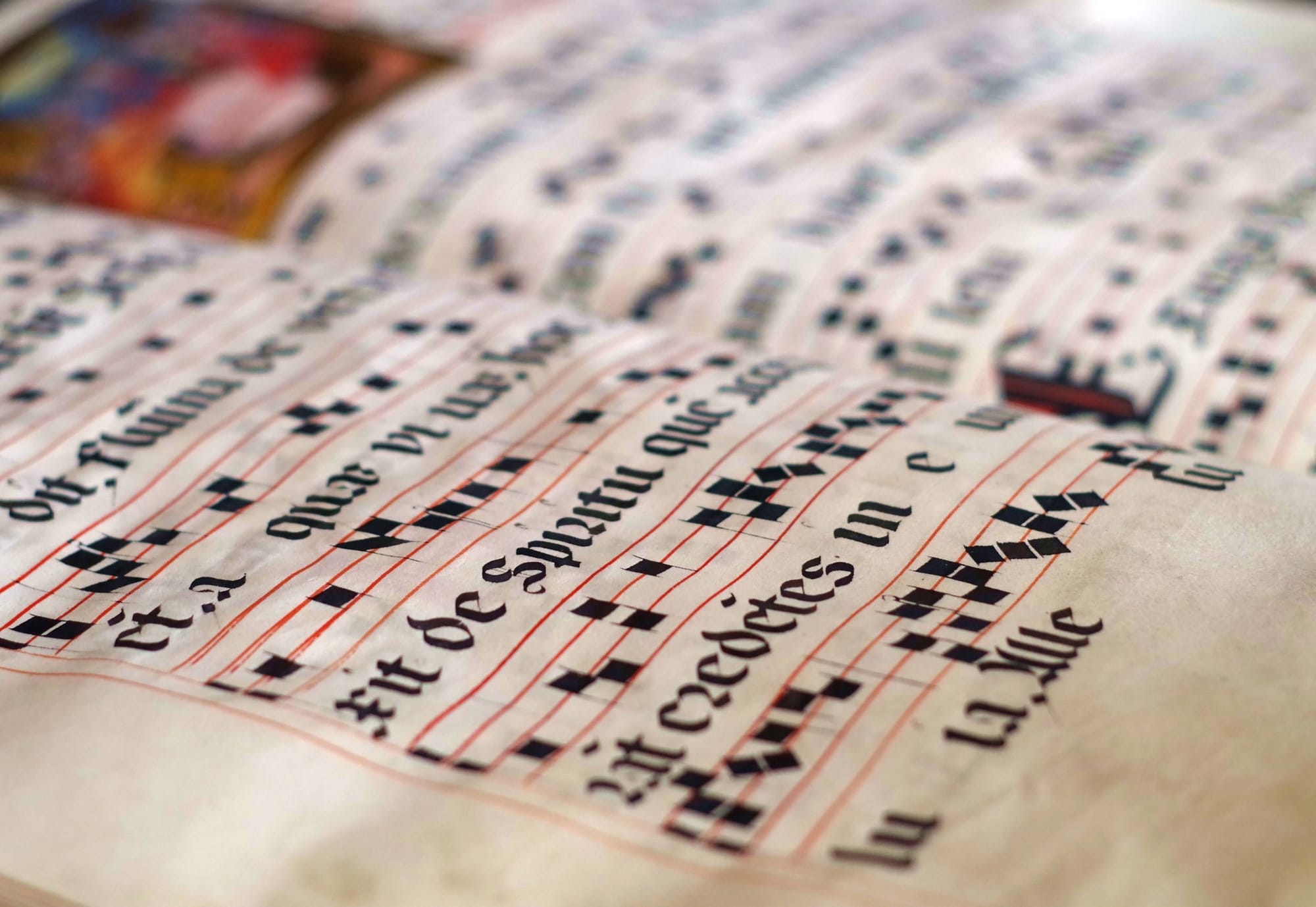How to Match Music to a Choral Group's Skill Level

Music has the incredible power to bring people together, evoke emotions, and create a sense of community. Within the world of music, choral singing stands out as a beautiful expression of artistry. However, to achieve the best sound for a choral group, the director / conductor must be able to match the music that the group will sing to the skill level of that group. In this article, we will explore the intricacies of selecting music that suits a choral group's abilities, ensuring a rewarding and enjoyable experience for both singers and audiences alike.
Understanding the Choral Group
Before embarking on the journey of selecting music, it's imperative to have a deep understanding of the choral group you are working with. This involves considering various factors:
1. Vocal Range: Determine the vocal ranges within the group. Knowing this will help you select pieces that highlight the group's strengths.
Although this isn’t a scientific study, it seems that people’s voices, singers in particular, have become lower in their singing ranges. The treble and bass staves that we use for singing were designed to reflect the average range of female and male voices, respectively. Female singers of a few decades ago could easily reach the top of the treble clef and a few notes beyond. Now, the fourth line D is the top of many female singer’s range. The same is true for male voices, especially tenors. This may make some older classical music out of reach for some choral groups, although, with some training and exposure to properly trained singers, these ranges can be extended.
2. Experience Level: Assess the group's experience level. Are they beginners, intermediate, or advanced singers? Some will have had the benefit of previous music teachers that had their students sing in rounds or do true two-part harmony. They also may have had the privilege of being exposed to and singing in a church choir, rare as they may be. Others may have only had a teacher who, although wanting to expose students to music, were only able to lead them in unison singing. Knowing this will affect the complexity of the music they can tackle.

3. Size: The size of the choral group matters. Smaller groups may be more suited to intricate, chamber-style pieces, while larger ensembles may be limited to pieces that don’t require such a light touch. Smaller groups can also sing more delicate, intimate pieces, while a larger group are more able to achieve the rousing, thunderous sound that only a large group can do. Larger groups, in general, are more likely to have a pool of more talented and experienced singers that can help advance the general skill level of the group.

4. Rehearsal Time: Consider how much time the group has for rehearsal. Those schools or homeschool groups which truly value their music program will provide time for rehearsals as many days a week as possible. Some schools, because of apathy towards a music program or other scheduling restrictions, may only have two or three days a week available for the choral group to rehearse. This will help the conductor make the most of the schedule to make learning and perfecting the chosen music as advantageous as possible.
There is a supplementary activity that can be used, but every member of the group must be involved for it to work; this would be best used by a truly dedicated group of singers. It would involve extra practice at home, perhaps each part meeting as a group at school during off times (before or after regular schedule) or even at a student’s home. This would afford more time for learning the music and allow for the choral group to attempt a more advanced level of music difficulty.
This might work only in smaller groups, in smaller communities where students are acquainted with not only the other students in their neighborhood but their families as well.
5. Natural Tonal Quality and Volume: Every choral group has its unique tonal quality. Some may excel at a warm, resonant sound, while others may have a brighter, crisper tone. Some regional accents may affect the tone. A Midwest accent may sound rounder and warmer than an Appalachian accent. (I have heard the same song being sung by choral groups from both of those places and the tonal difference is quite noticeable.) Properly assessing the type of tonal quality that the choral group has helps the director to select music that best complements their natural sound.
It’s also necessary to know which singers are naturally louder or softer, and if they are scattered evenly throughout the ensemble or are they clustered together in one part.
Choosing Appropriate Repertoire
Once you have a comprehensive understanding of the choral group, you can begin the process of selecting suitable repertoire. Here are some steps to guide your selection:
1. Listen and Research: Start by listening to a wide variety of choral music. This can include different genres, time periods, and composers. There is a dizzying array of music available, but not every piece fits every choral group.
Additionally, research the history and background of pieces you're considering. Understanding the context can deepen the group's connection to the music. Here’s a good place to start listening to some newer music to see if it fits your choral group, Salt Cellar’s collection of original choral pieces and arrangements of classic pop tunes. Click HERE.
2. Consider the Text: Pay attention to the lyrics or text of the piece. Ensure that the content is appropriate for the group's age, values, and beliefs. For example, a piece about the horrors of war may or may not be appropriate for a choir whose parents are in the military and are currently engaged in an armed conflict somewhere. Songs about the hope that springtime provides or the love of a good friend are always appropriate. And a choral director can choose from a deep and wide variety of music about the incarnation of Jesus for a Christmas concert.
3. Evaluate Complexity: Based on your assessment of the group's skill level, choose music that aligns with their abilities. Beginners may benefit from simpler arrangements with fewer vocal parts, while more experienced groups can handle intricate harmonies and challenging rhythms. There are a number of pieces that sound more complex than they are. This is achieved by using a simple harmony that sounds somewhat like its own melody, and lacks any difficult skips in its rendering or odd sounding intervals in its harmony. This helps the harmony part to make better sense to the singer.
The consonance or dissonance of the piece should also be considered. Some dissonance are easier to sing if they are grounded in a solid melody line. (Please see my blog on How Dissonant Chords Provide Power and Beauty in Choral Music).

4. Balance Repertoire: Aim for a balanced repertoire that includes a variety of musical styles, tempos, time signatures, featured voices and moods. Some songs even lend themselves to clapping, swaying or a simple dance move. Others could use a tambourine, finger cymbals or clave′s. This not only keeps rehearsals engaging but also showcases the group's versatility.
Radio stations used to program using a “roller-coaster” method. The playlist for a portion of the show would start with an energetic song, followed by one not quite as energetic. The list would be about ten songs long, and when it was time for the fifth song, it would be a ballad or other slow or somber song. The energy of the songs would then return to the most lively type by the end of the set.
This might be a good plan for your group when you’re planning your next concert. If the concert is going to be a bit long, you could use a “high-low-high-low-high” format. Knowing the format of your concert will also help you choose the most appropriate music for your group.
5. Challenge and Growth: While it's important to choose music that the group can perform well, don't be afraid to introduce a slightly challenging piece to encourage growth. Just ensure that it's within their reach if they are willing to engage in dedicated practice. If your group is great at odd intervals for harmony, but a bit weak when singing complicated rhythms, you might choose one that has more standard harmonies but has rhythms that would challenge them and raise their skill level in the process.
This bit of challenge is called The Pygmalion Effect, which is an experience where higher expectations lead to an increase in performance. It often works in a group of people who are aiming for the same goal. So, while matching new music to a choral group’s current skill level is good for singing comfortably, sometimes a choral director needs to use a piece that is slightly more difficult than the ensemble can currently handle. With the proper enthusiastic presentation and encouragement, many choral groups can improve their performance and confidence through the use of this process.

6. Custom Arrangements: If you can't find existing arrangements that fit the group perfectly, consider having a custom arrangement or original composition written for your group. This allows you to tailor the music to the group's strengths and preferences. Salt Cellar Creations can do either one for you. There are two ways that a custom arrangement or composition can be done; one is much more affordable than the other. And SCC is always looking for ideas of pieces to arrange or suggestions for original pieces. Please CONTACT US for more information.
Rehearsal and Performance
With the chosen repertoire in hand, it's time to delve into rehearsals. Here are some tips to make the most of your rehearsal time:
1. Sectional Rehearsals: Divide the group into sections (soprano, alto, tenor, bass) for focused rehearsals. This allows singers to work on their specific parts, ensuring a polished performance. This is a great time for section leaders t shine by using their leadership skills well. If you’d like some help in choosing such leaders, here’s a link to my article about How to Select Section Leaders for Your Choral Group.

2. Vocal Techniques: Incorporate vocal exercises and techniques to improve intonation, breath control, and overall vocal quality. Pronunciation of words must also be consistent. Although some regional accents may be distinctive or even charming, an overlap of accents can make it difficult for an audience to understand what’s being sung.
If possible, have a vocal coach or voice teacher come to class to share what they know. Despite the professional knowledge, skill and vocal quality of the choral teacher, and the fact that he or she has described and demonstrated various singing skills, sometimes it takes an outside voice to reinforce what’s already been taught.
3. Musical Interpretation: Encourage the group to interpret the music emotionally and spiritually, as close to the composer’s original intention as possible, if that can be determined. This would be another chance to have a classroom visitor – the composer or arranger of the music. He or she could describe the origin of the lyrical and musical elements of the piece, as well as the intention of the lyrics and any subtle nuances that are hard to describe using traditional musical markings.
4. Recording and Feedback: Record rehearsals and performances to provide feedback and track progress. This helps the group identify areas for improvement.
There are number of recording techniques that can be used for this. It would take a number of microphones, a separate person to operate a mixer, and possibly a separate room to be able to spread out. Using the auditorium might work. One method would be to have each part sing into a separate microphone or set of mics, especially if a multi-track recorder is available. That way, each part could hear how they sound and how they combine with the other parts. Another method would be to do a standard stereo mix with two or four mics, but have the group stand in a non-traditional order, e.g., from left to right – sopranos, altos, tenors and basses. Lastly, is to do a traditional stereo recording with traditional section placement. The different arrangements can help the whole choral group hear better and know what they are doing well and what areas need improvement.
5. Practice Resources: Provide practice resources, such as sheet music, recordings, and practice tracks to assist singers in learning their parts outside of rehearsal. Some music is available that will allow someone to follow along as it is played.
Conclusion
Matching music to a choral group's skill level is a delicate yet rewarding task. It requires a deep understanding of the group's abilities, thoughtful repertoire selection, and effective rehearsal techniques. When done with care and consideration, the result is a harmonious and moving musical experience that resonates with both performers and audiences, reflecting the power and beauty of choral music.
Salt Cellar Creations understands the intricacies of choosing good choral music and has a growing library of original works and arrangements. Find out more about what Salt Cellar Creations has to offer for Choral Groups HERE. Explore the available music HERE.
SCC can also compose an original piece for you or do a custom arrangement for you. There are two ways that this can be done; one is much more affordable than the other. And SCC is always looking for ideas of pieces to arrange or suggestions for original pieces.
We have sold music not only in the US but in Canada, the United Kingdom, France, Australia, New Zealand and Austria. Please visit the WEBSITE or CONTACT US to let us know what we can do for you!